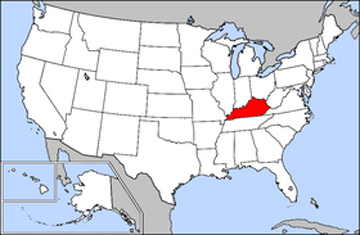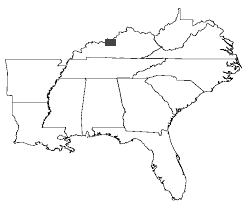Abraham Lincoln Birthplace
National Historical Park preserves two separate farm sites
in LaRue County, Kentucky where Abraham Lincoln was born and lived until
the age of seven. He was born on February 12, 1809 at the Sinking Spring
site south of Hodgenville and remained there until the family moved
to the Knob Creek Farm northeast of Hodgenville when he was two years
old, living there until he was seven years old.
The Sinking Spring site is the location of the park visitors center,
and this is where Lee and Karen Duquette visited. |
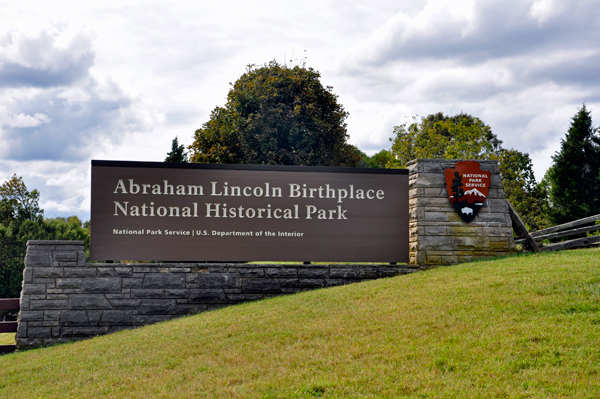 |
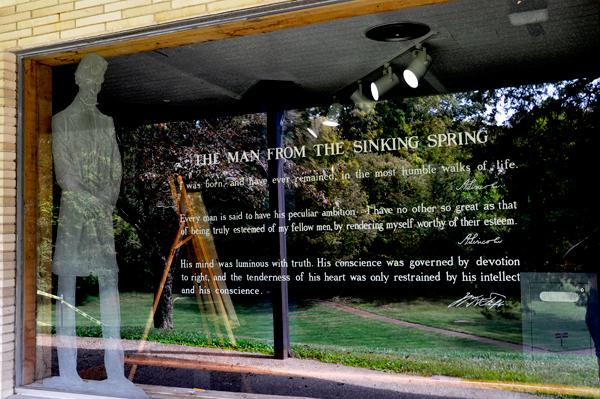 |
Below: Many
interesting statues and displays inside The Visitor Center |
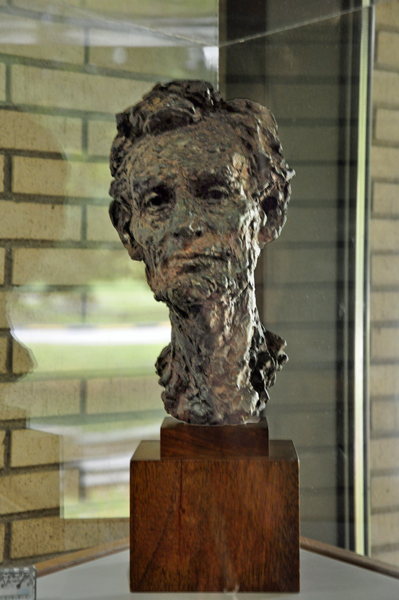 |
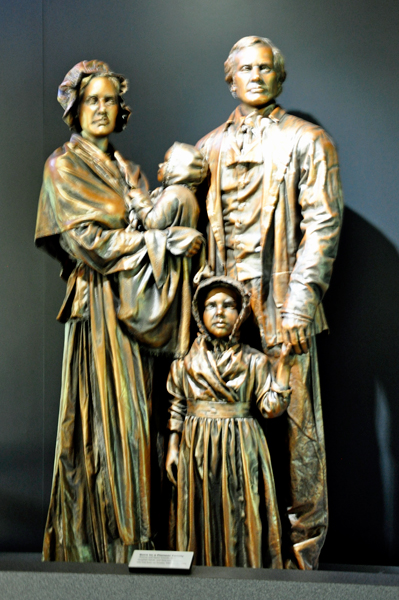 |
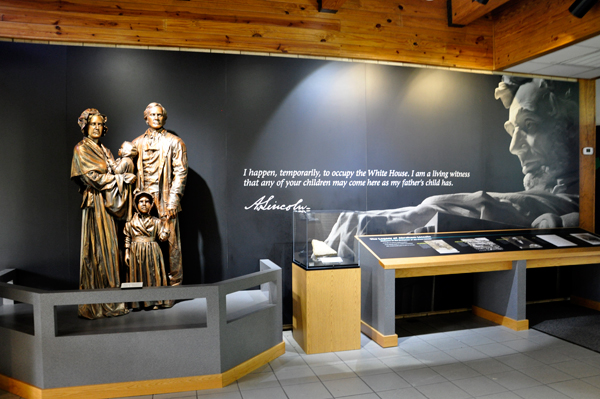 |
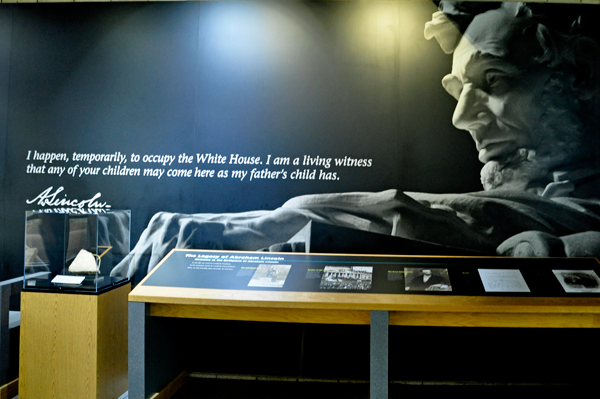 |
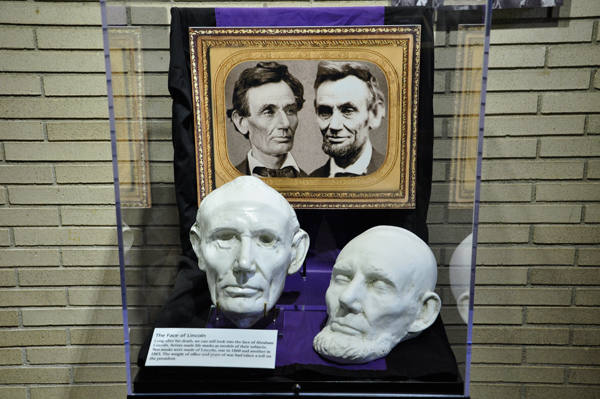 |
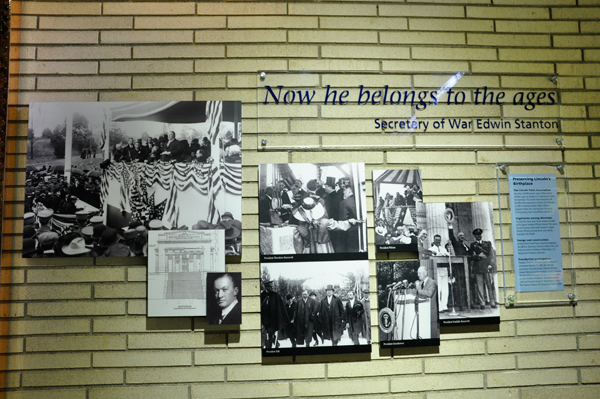 |
Below: A replica
of the inside of a typical log cabin, plus an interesting way to make
a family tree. |
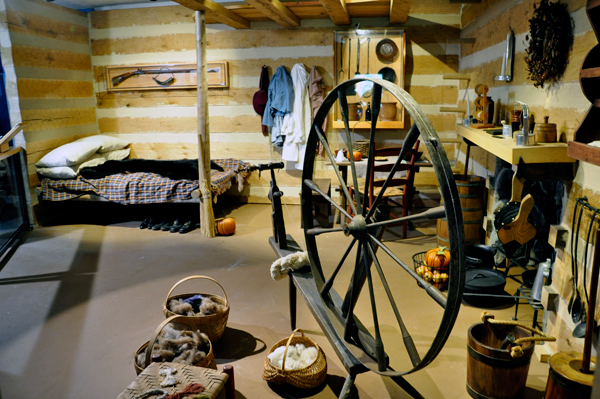 |
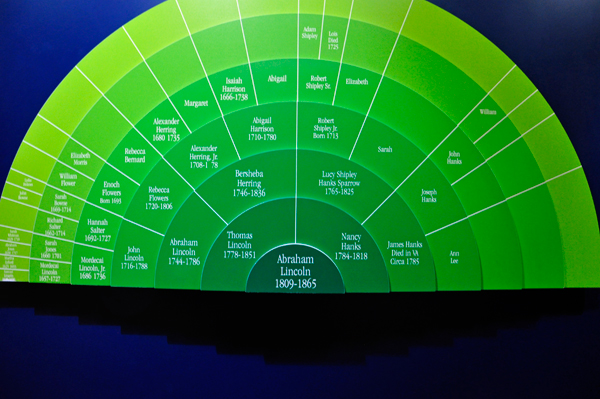 |
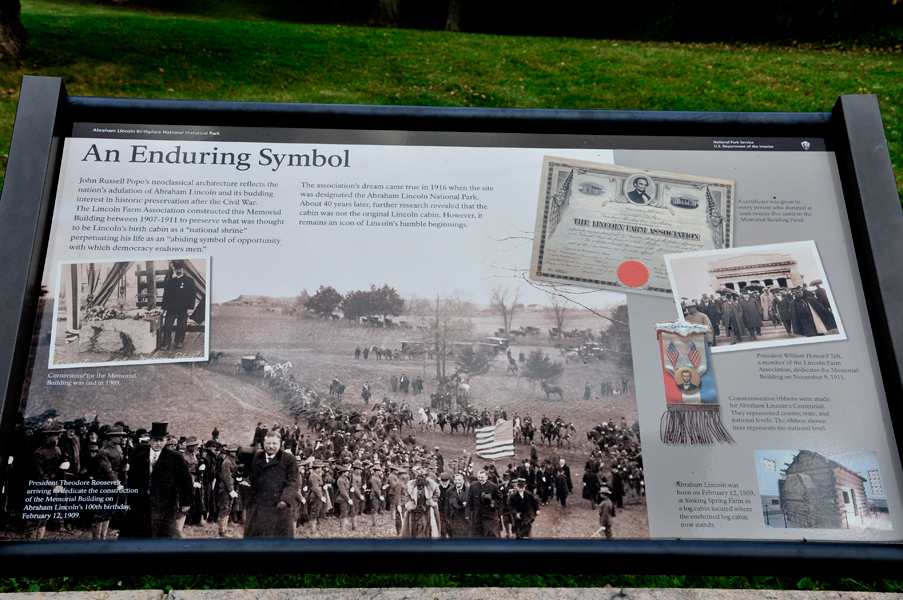 |
 A
Beaux-Arts neo-classical Memorial Building was designed by John Russell
Pope for the birthplace site. In 1909 the cornerstone was laid by President
Theodore Roosevelt and the building was dedicated in 1911 by President
William Howard Taft. Almost a hundred years after Thomas Lincoln moved
from Sinking Spring Farm, a similar log cabin was placed inside the
Memorial Building. The Memorial Building features 16 windows, 16 rosettes
on the ceiling, and 16 fence poles, representing Lincoln's being the
16th president. The 56 steps leading up to the building entrance represent
his age at his death. Karen Duquette is shown part way up the stairs. A
Beaux-Arts neo-classical Memorial Building was designed by John Russell
Pope for the birthplace site. In 1909 the cornerstone was laid by President
Theodore Roosevelt and the building was dedicated in 1911 by President
William Howard Taft. Almost a hundred years after Thomas Lincoln moved
from Sinking Spring Farm, a similar log cabin was placed inside the
Memorial Building. The Memorial Building features 16 windows, 16 rosettes
on the ceiling, and 16 fence poles, representing Lincoln's being the
16th president. The 56 steps leading up to the building entrance represent
his age at his death. Karen Duquette is shown part way up the stairs.
|
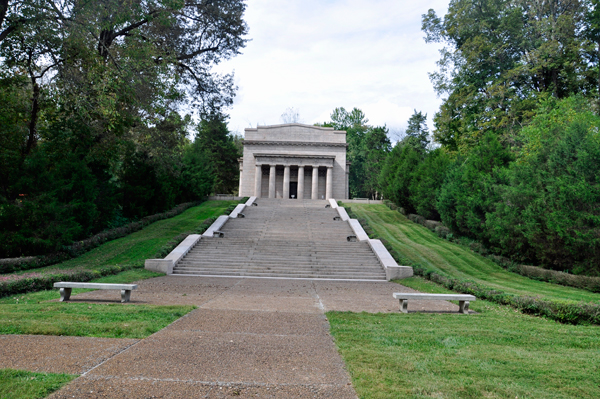 |
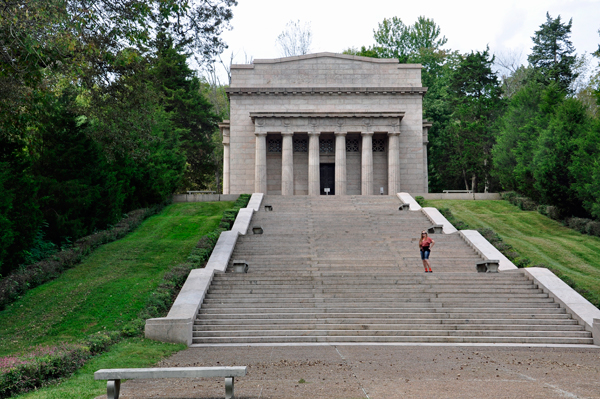 |
 The original Memorial was constructed by the Lincoln Farm Association. In 1916, they donated the Memorial to the Federal government, which established the Abraham Lincoln National Park on July 17, 1916. The War Department administered the site until August 10, 1933, when it was transferred to the National Park Service. It was designated as the Abraham Lincoln National Historical Park on August 11, 1939. It was renamed and redesignated Abraham Lincoln Birthplace National Historic Site on September 8, 1959. As with all historic sites administered by the National Park Service, the site was listed on the National Register of Historic Places, effective on October 15, 1966. The historic site's definition was expanded to include the Knob Creek site on November 6, 1998. On March 30, 2009, the two sites were again designated a National Historical Park. The original Memorial was constructed by the Lincoln Farm Association. In 1916, they donated the Memorial to the Federal government, which established the Abraham Lincoln National Park on July 17, 1916. The War Department administered the site until August 10, 1933, when it was transferred to the National Park Service. It was designated as the Abraham Lincoln National Historical Park on August 11, 1939. It was renamed and redesignated Abraham Lincoln Birthplace National Historic Site on September 8, 1959. As with all historic sites administered by the National Park Service, the site was listed on the National Register of Historic Places, effective on October 15, 1966. The historic site's definition was expanded to include the Knob Creek site on November 6, 1998. On March 30, 2009, the two sites were again designated a National Historical Park.
|
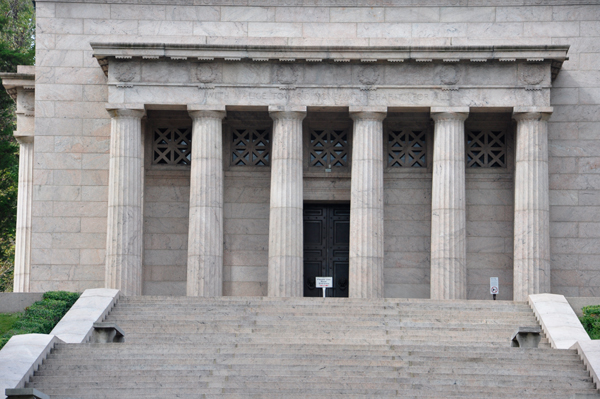 |
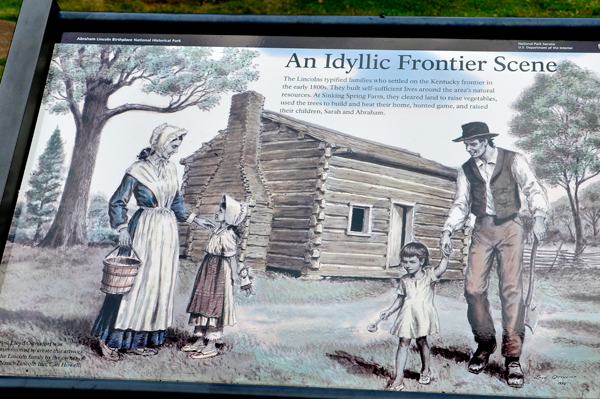 |
 In the fall of 1808, Thomas and Nancy Lincoln settled on Sinking Spring Farm. Two months later on February 12, 1809, Abraham Lincoln was born there in a one-room log cabin. Today this site bears the address of 2995 Lincoln Farm Road, Hodgenville, Kentucky. A cabin, symbolic of the one in which Lincoln was born, is preserved within a 1911, memorial building at the site. In the fall of 1808, Thomas and Nancy Lincoln settled on Sinking Spring Farm. Two months later on February 12, 1809, Abraham Lincoln was born there in a one-room log cabin. Today this site bears the address of 2995 Lincoln Farm Road, Hodgenville, Kentucky. A cabin, symbolic of the one in which Lincoln was born, is preserved within a 1911, memorial building at the site.
|
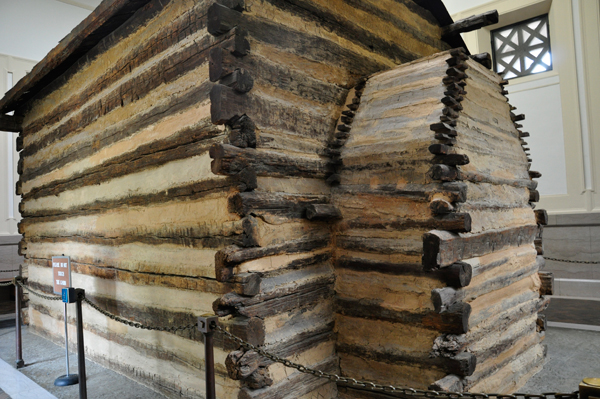 |
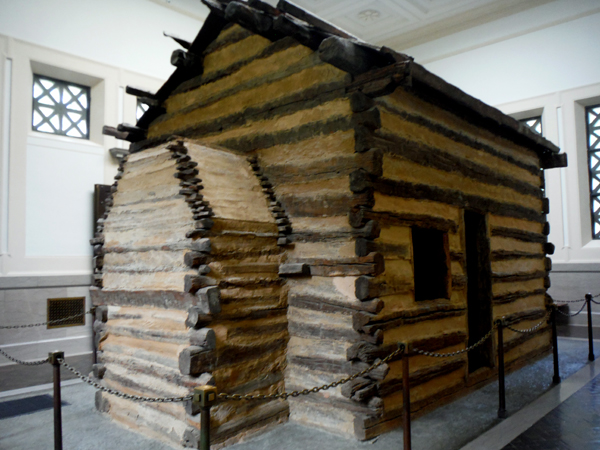 |
 The original log cabin that Lincoln was reputed to have been born in was dismantled sometime before 1865. Local tradition held that some of the logs from the cabin were used in construction of a nearby house. New York businessman A.W. Dennett purchased the Lincoln farm in 1894 and used the logs from this house to construct a cabin similar in appearance to the original cabin where Lincoln was born. Soon the cabin was dismantled and re-erected for exhibition in many cities. Eventually the logs for this cabin, along with logs incorrectly reputed to have belonged to Jefferson Davis' birthplace and possibly a third cabin, were purchased by the Lincoln Farm Association (LFA), which believed they had acquired only Lincoln logs. When workers tried to reconstruct the cabin, they discovered the problem. The LFA bought a one-room cabin similar to the one reconstructed by Dennett. When the last rebuilt cabin was placed in the Memorial Building, its size made visitor circulation difficult. The LFA reduced the cabin's size from 16-by-18 feet to 12-by-17 feet. The original log cabin that Lincoln was reputed to have been born in was dismantled sometime before 1865. Local tradition held that some of the logs from the cabin were used in construction of a nearby house. New York businessman A.W. Dennett purchased the Lincoln farm in 1894 and used the logs from this house to construct a cabin similar in appearance to the original cabin where Lincoln was born. Soon the cabin was dismantled and re-erected for exhibition in many cities. Eventually the logs for this cabin, along with logs incorrectly reputed to have belonged to Jefferson Davis' birthplace and possibly a third cabin, were purchased by the Lincoln Farm Association (LFA), which believed they had acquired only Lincoln logs. When workers tried to reconstruct the cabin, they discovered the problem. The LFA bought a one-room cabin similar to the one reconstructed by Dennett. When the last rebuilt cabin was placed in the Memorial Building, its size made visitor circulation difficult. The LFA reduced the cabin's size from 16-by-18 feet to 12-by-17 feet.
Today, historians recognize that the former claim that these logs were from Lincoln's birth cabin was essentially inaccurate. In his book It All Started With Columbus, satirical writer Richard Armour stated that Lincoln had been born in three states and also "in two cabins - the original, and the reconstructed." |
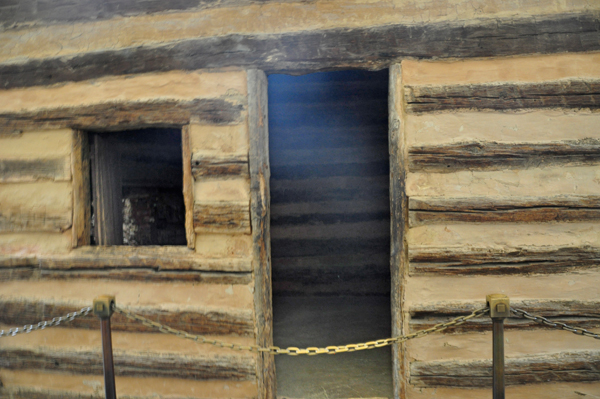 |
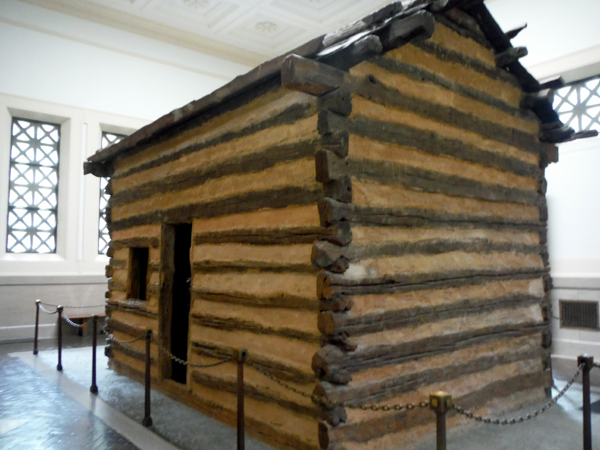 |
 Lincoln lived at Sinking Spring until he was two years old, before moving with his family to another farm a few miles to the northeast along Knob Creek, near present-day U.S. Highway 31E, where he lived until the age of seven. Lincoln lived at Sinking Spring until he was two years old, before moving with his family to another farm a few miles to the northeast along Knob Creek, near present-day U.S. Highway 31E, where he lived until the age of seven.
The Knob Creek site was added to the park in 2001. It features a 19th-century log cabin and a historic 20th century tavern and tourist site. The log cabin is not original to the site, but may have belonged to neighbors of the Lincolns. It was moved to the approximate location of the Lincolns' home. One of Abraham Lincoln's earliest memories was his near drowning in Knob Creek, and being saved by the neighbor's son.
Lincoln lived here until the age of seven, when his family moved to Indiana, to the site now commemorated as the Lincoln Boyhood National Memorial. This site was under some re-construction, so the two RV Gypsies could not visit there. |
| |
Below: Lee
Duquette took time to read and study several informative signs in the
area. Karen Duquette often waits to read the signs after she posts them
on this website. |
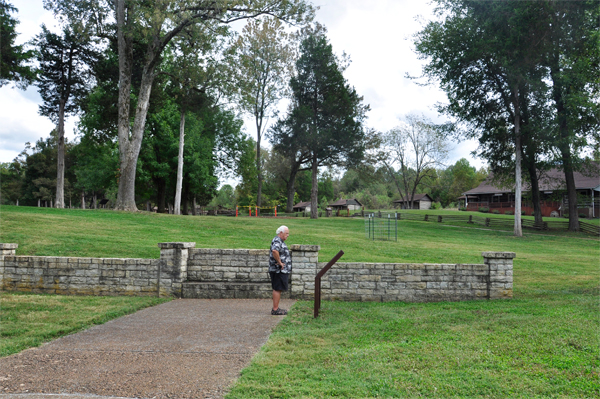 |
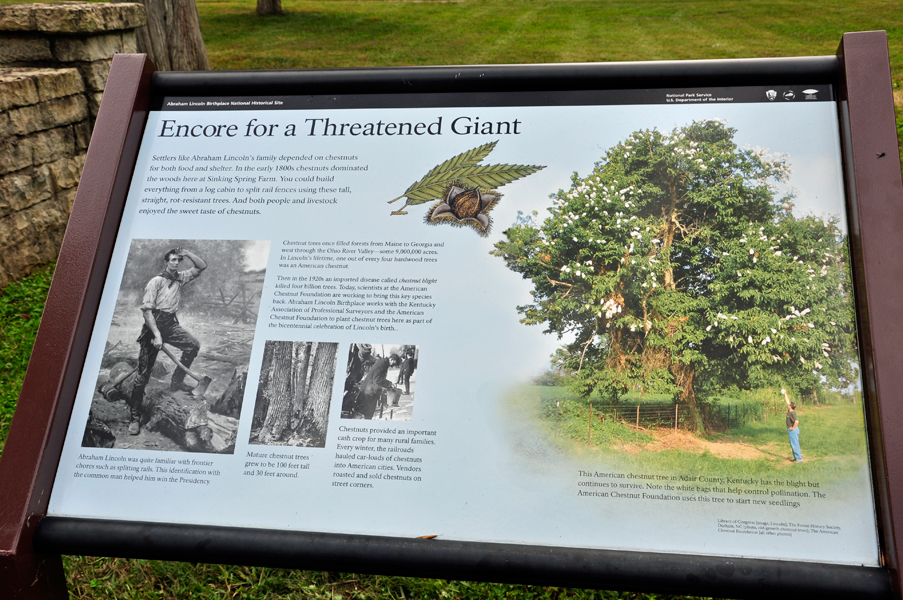 |
Below: The Boundary Oak was
one of the most significant features of Sinking Spring Farm. Until its
death in 1976, the great white oak remained the last living link to
Abraham Lincoln. The tree, thought to be 25 to30 years old at Lincoln's
birth, was located less than 150 yards from the cabin where he was born.
These trees often mark property boundaries. |
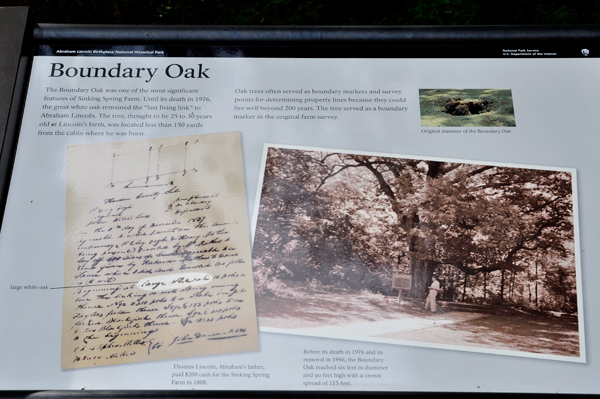 |
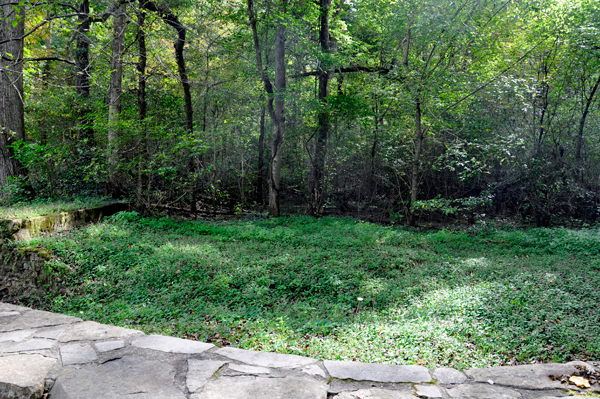 |
Below: The Sinking Spring is an example of a karst window, an unusual landform. A karst window is a special type of sinkhole that gives a view into the karst aquifer. |
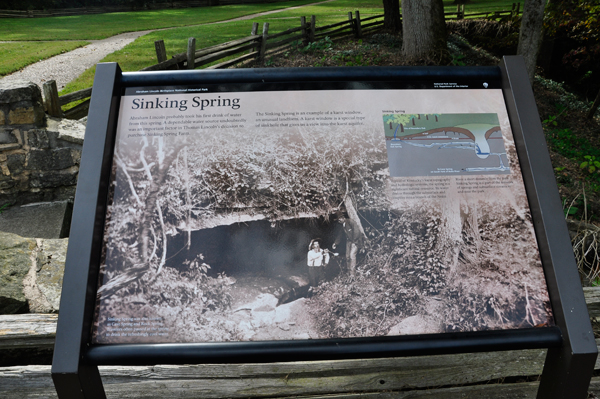 |
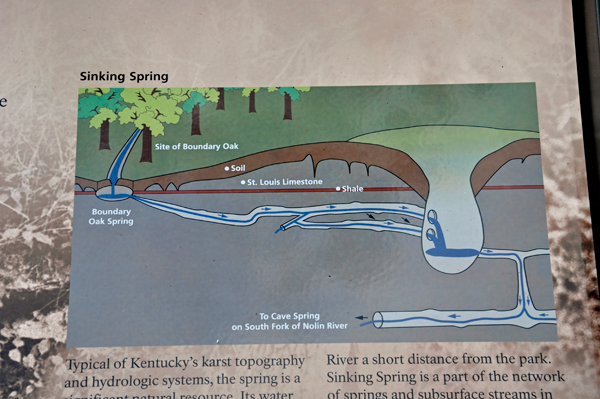 |
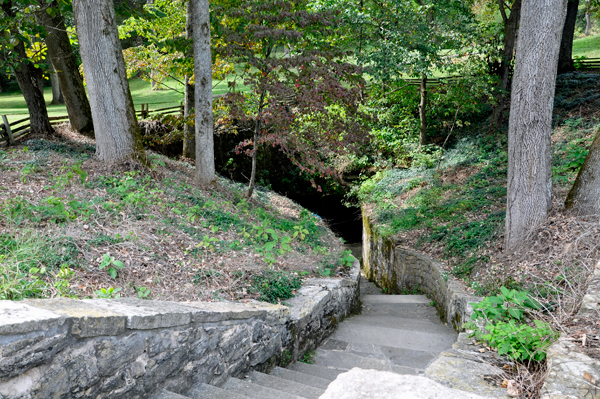 |
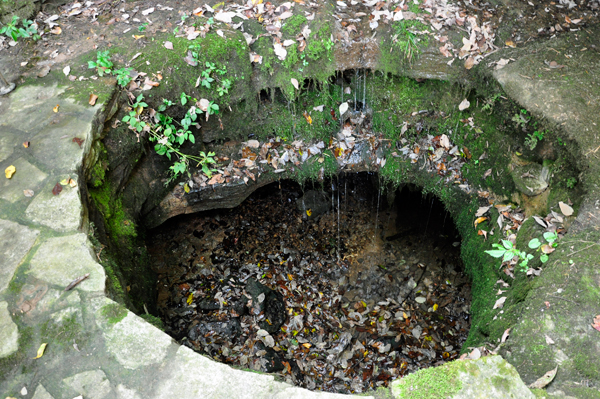 |
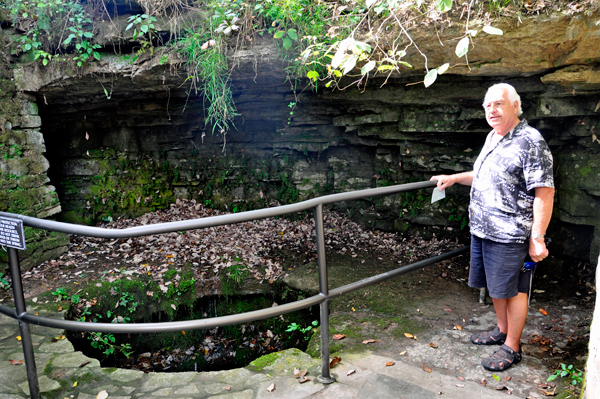 |
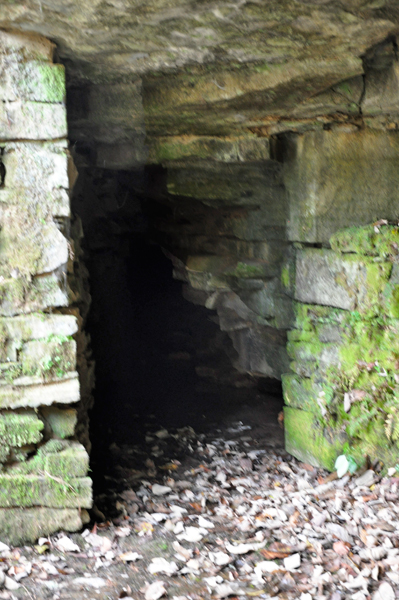 |
Below: Also on the property
is the privately owned Nancy Lincoln Inn, which is now a museum and
souvenir shop that was closed while Lee and Karen Duquette were here. |
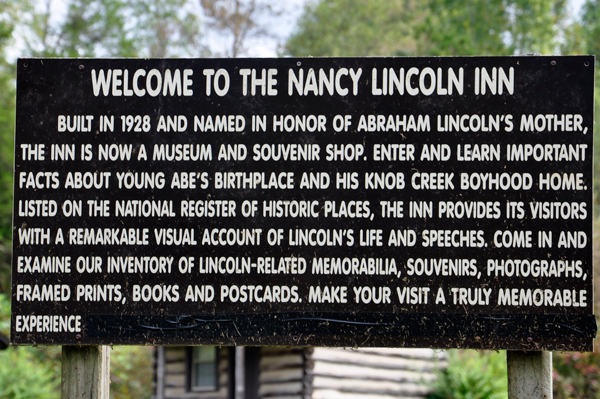 |
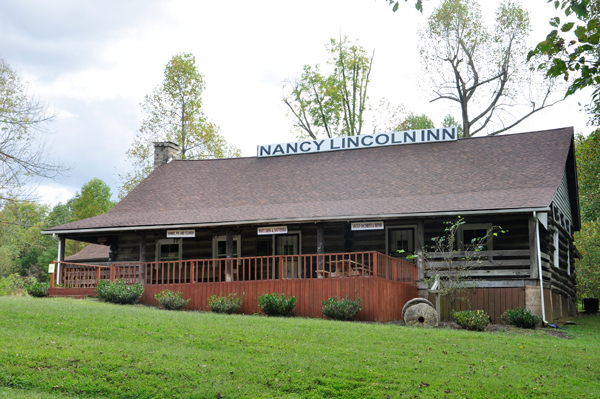 |
Most of the above quotes are from https://en.wikipedia.org/wiki/Abraham_Lincoln_Birthplace_National_Historical_Park.; Wikipedia, the free encyclopedia is quoted in a lot of the history facts throughout this website. |
